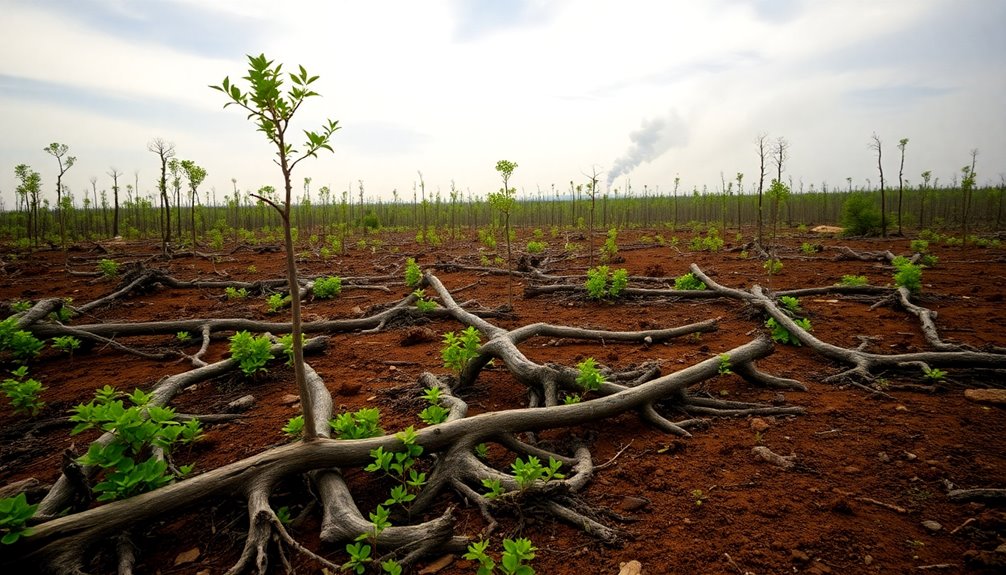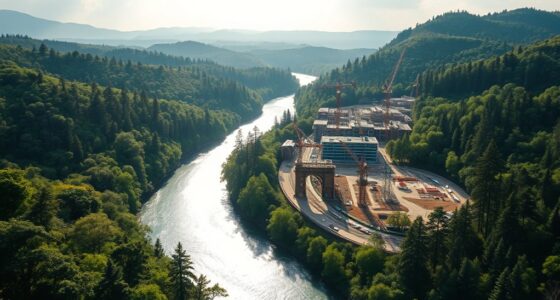Habitat loss is the single greatest threat to biodiversity today, and it's mostly due to human actions. When you think about deforestation, urbanization, and pollution, it's clear how these actions destroy and fragment natural environments. Approximately 80% of endangered species are affected by this loss, leading to mass extinctions and unbalanced ecosystems. With climate change also playing a role, species face even higher risks. Human activities worsen the situation, causing a cycle of degradation. Understanding these impacts can help you see the importance of protecting our planet's biodiversity. There's much more to explore about how we can make a difference.
Key Takeaways
- Habitat loss, primarily driven by human activities like deforestation and urbanization, is the greatest threat to global biodiversity.
- Approximately 80% of species under the Endangered Species Act are negatively impacted by habitat destruction and degradation.
- Climate change exacerbates habitat loss, altering ecosystems and threatening species survival across various regions.
- Invasive species and pollution further disrupt native ecosystems, contributing significantly to biodiversity decline.
- Conservation efforts, including protected areas and community involvement, are essential to mitigate habitat loss and support biodiversity recovery.
Definition and Impact
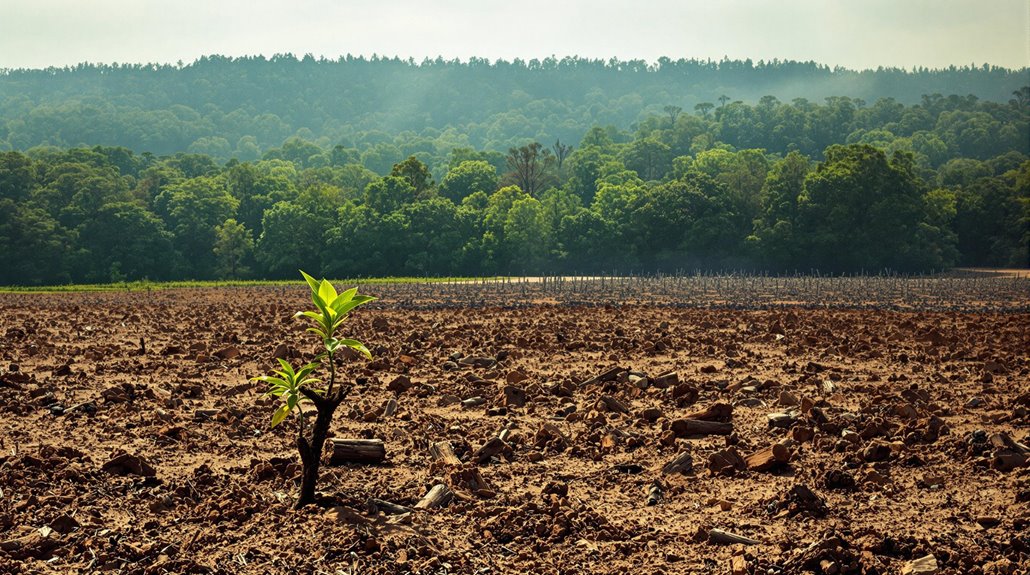
While biodiversity is essential for maintaining healthy ecosystems, its greatest threats lie in human actions that disrupt natural habitats.
Habitat loss, defined as the destruction, degradation, or fragmentation of natural environments, poses a severe risk to species survival. Over 1.6 million square miles of forest have vanished since the 1990s, impacting 80% of species protected under the Endangered Species Act. Additionally, the rapid extinction rates have reached unprecedented levels, exacerbating the challenges faced by endangered species.
In places like Sumatra, half of the forests have been lost, which affects biodiversity hotspots. From 2002 to 2019, global tree cover decreased by 9.7%, with significant losses in Indonesia and Malaysia.
This habitat destruction accelerates, leading to mass extinction and threatening the delicate balance of ecosystems that we all rely on for our survival.
Causes of Habitat Loss
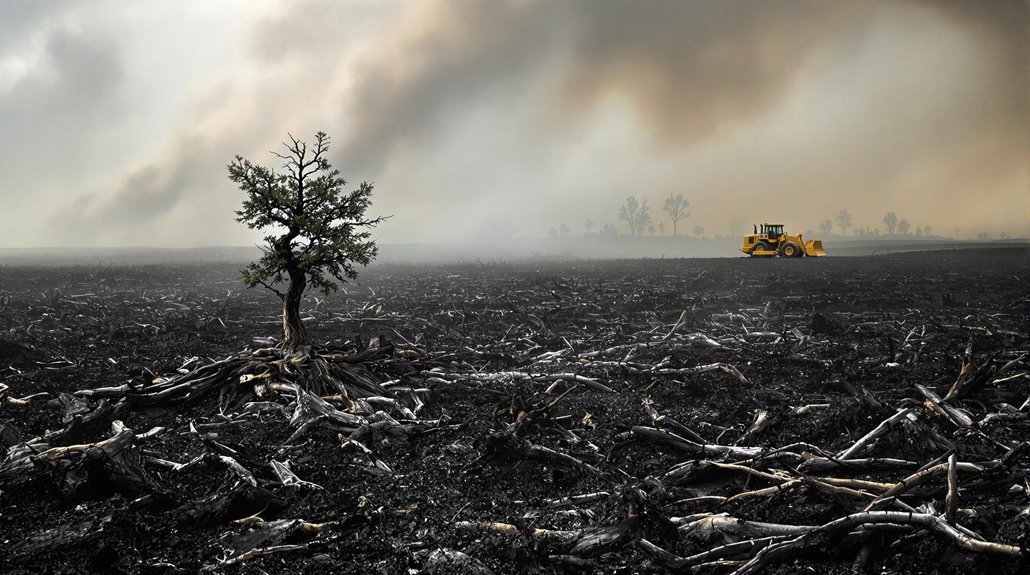
Human activities are the primary drivers of habitat loss, leading to dire consequences for biodiversity.
You mightn't realize it, but land use changes, like converting natural areas into cropland, are significant contributors to this issue. Urbanization and infrastructure development fragment habitats, making it harder for species to thrive. In fact, land use change accounts for 30% of global biodiversity decline.
Pollution from chemicals and plastics further degrades ecosystems, threatening aquatic and terrestrial life. Invasive species invade native habitats, outcompeting local flora and fauna.
Climate change adds another layer of stress, altering ecosystems and causing species to shift their ranges. Each of these factors not only impacts individual species but also leads to a broader decline in biodiversity, making it critical for you to understand and address these causes.
Regional Impact
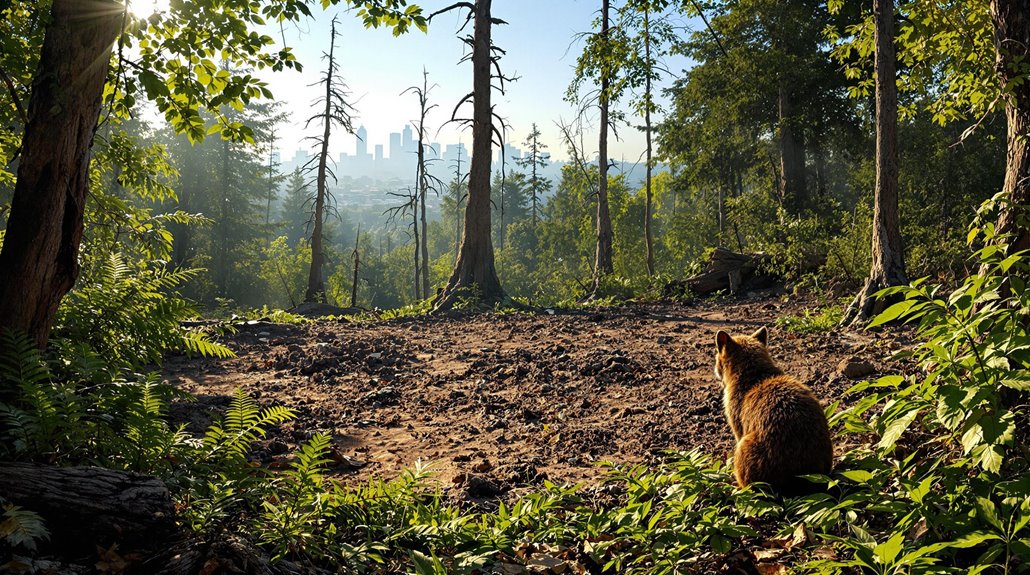
As biodiversity faces unprecedented threats, the regional impacts vary markedly across the globe.
In Southeast Asia, agriculture, hunting, and logging threaten amphibians, birds, and mammals, creating complex conservation challenges. This region faces high risk from all six identified threats, including climate change.
Europe struggles with invasive species and pollution, putting similar species at risk.
The polar regions face rising temperatures, making birds particularly vulnerable.
On the East Coast of Australia and in South Africa, climate change alters ecosystems, demanding coordinated conservation efforts.
Latin America and the Caribbean experience high habitat alteration rates, leading to declines in reptiles, amphibians, and fish.
In Africa, species overexploitation poses a severe risk to pollinators like bees, necessitating targeted conservation strategies.
These regional threats highlight the urgent need for localized solutions to protect biodiversity.
Consequences of Habitat Loss
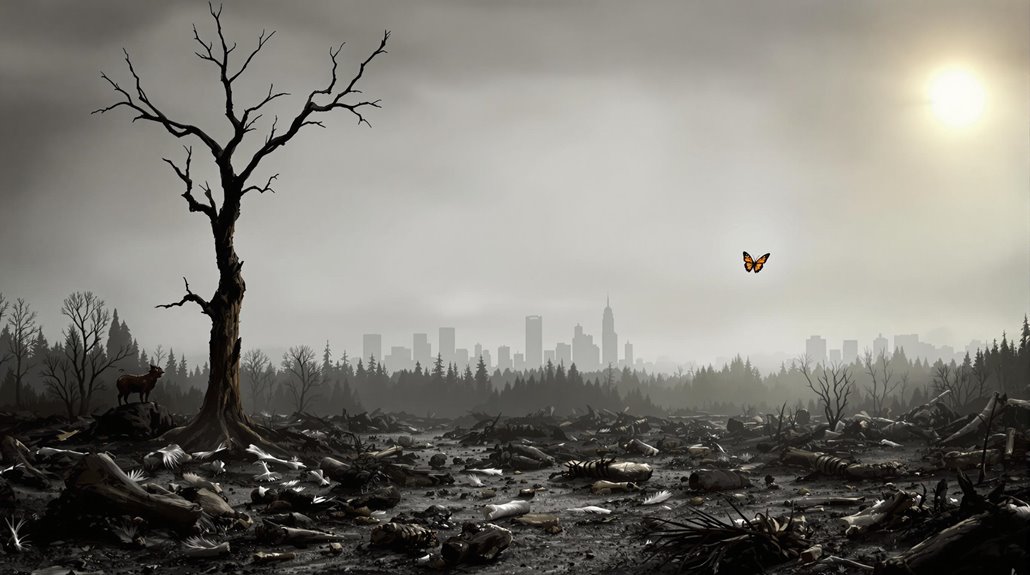
The regional impacts of biodiversity loss underscore the urgent consequences of habitat loss worldwide. When habitats disappear, species populations decline, putting them at greater risk of extinction. You may notice that smaller, isolated groups suffer from reduced genetic diversity, making them more prone to inbreeding and further decline. Ecosystems also become disrupted, losing the delicate balance that keeps them functioning. As habitats fragment, edge effects increase, leading to higher mortality rates and a greater chance of predation. Additionally, human activities like deforestation and industrial development exacerbate these issues, creating a cycle of degradation. Ultimately, habitat loss leads to less resilient ecosystems, making them unable to recover from disturbances, threatening the very fabric of life on Earth. Furthermore, climate change significantly alters habitats, further complicating species adaptation and survival.
Conservation Efforts
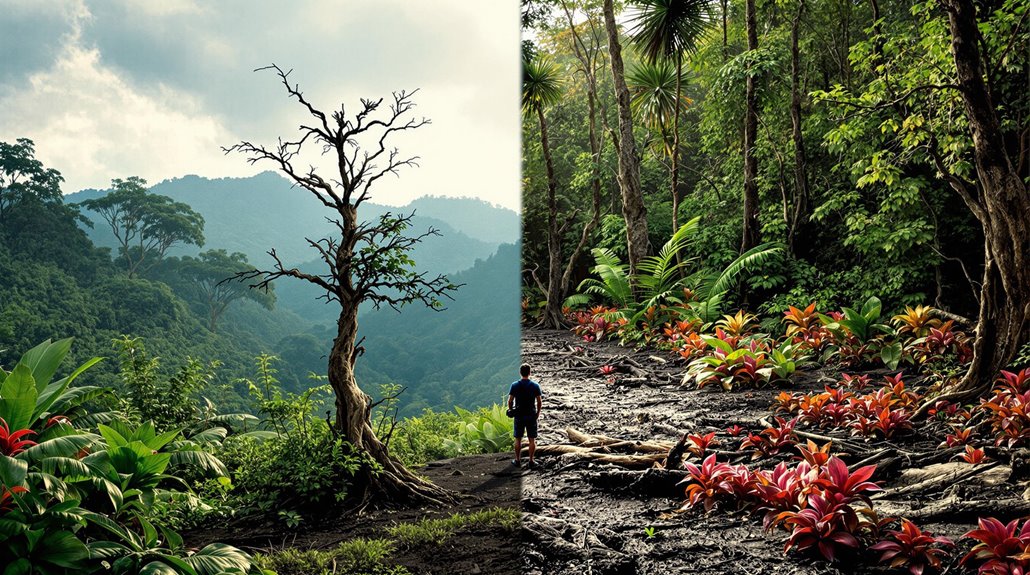
While biodiversity faces unprecedented threats, effective conservation efforts can make a significant difference in protecting our planet's ecosystems. Expanding and managing protected areas like national parks and wildlife sanctuaries is essential. These areas provide important habitats for countless species, but financial sustainability remains a challenge. Additionally, 30% of Earth's lands must be conserved by 2030 to meet global biodiversity goals.
In-situ conservation allows species to thrive in their natural environments, promoting adaptability. Meanwhile, ex-situ conservation, like breeding programs in zoos, secures endangered species for future reintroduction.
Additionally, adopting sustainable practices such as habitat rehabilitation and efficient resource use helps combat biodiversity loss. Community involvement is crucial, as local efforts can bolster conservation initiatives.
Future Directions
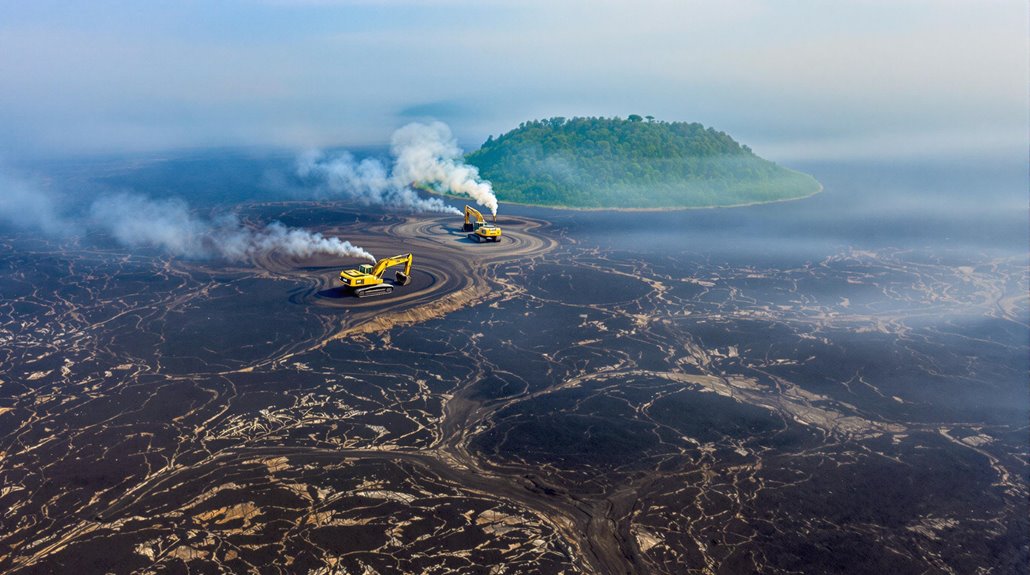
To effectively tackle the ongoing biodiversity crisis, you must consider a multifaceted approach that addresses future directions in conservation.
Start by enhancing multistate wildlife conservation through cross-border coordination and regional associations, ensuring that Species of Greatest Conservation Need (SGCN) are prioritized.
Next, address habitat alteration and fragmentation by implementing protected areas and restoration projects while recognizing the impacts of climate change and human development. Nearly 60% of U.S. lands are fragmented by human development, which hinders species movement and affects biodiversity.
Integrate climate resilience into your strategies by focusing on diverse landscapes that facilitate species movement.
Collaborate with organizations like The Nature Conservancy and US Fish & Wildlife Service to share knowledge and resources.
Importance of Biodiversity
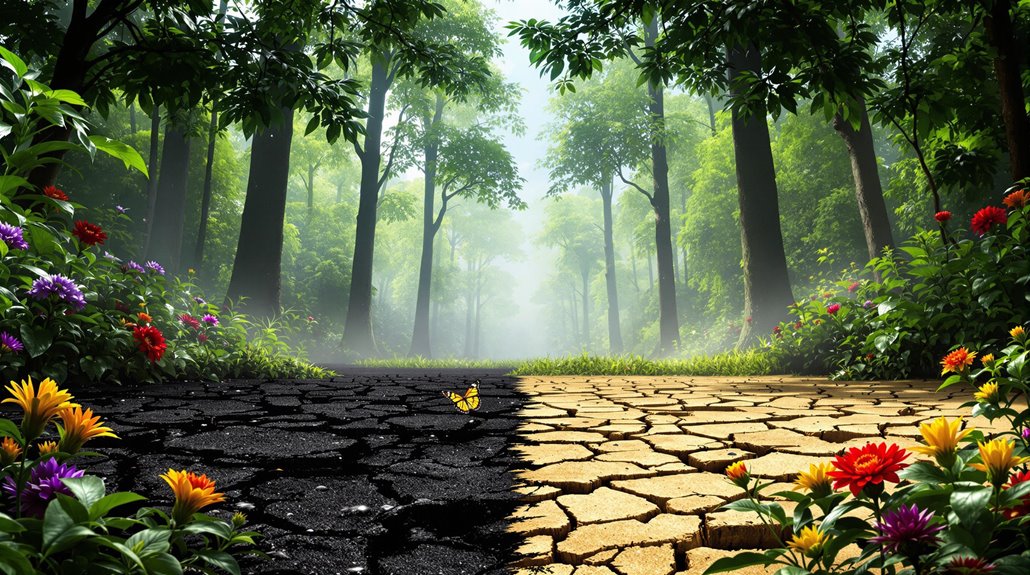
Biodiversity serves as the foundation for a healthy planet, providing essential services that support life. It produces oxygen, purifies air and water, and supports pollination, all important for your survival. Healthy ecosystems regulate pest populations, guaranteeing crops thrive and natural habitats remain intact. They also filter wastewater, maintaining clean water sources.
Moreover, biodiversity is critical for food production, with pollinators responsible for a third of the world's crops. It contributes to soil health and provides essential resources like animal protein, fiber, and medicines. Additionally, healthy ecosystems enhance resilience against environmental changes, ensuring that natural systems can adapt to shifting conditions. For instance, the presence of anti-inflammatory herbs in diverse ecosystems can lead to improved health outcomes for local populations.
Additionally, ecosystems play a role in climate regulation, flood control, and disease management. By preserving biodiversity, you secure a sustainable future and a thriving environment for generations to come.
Role of Community Involvement
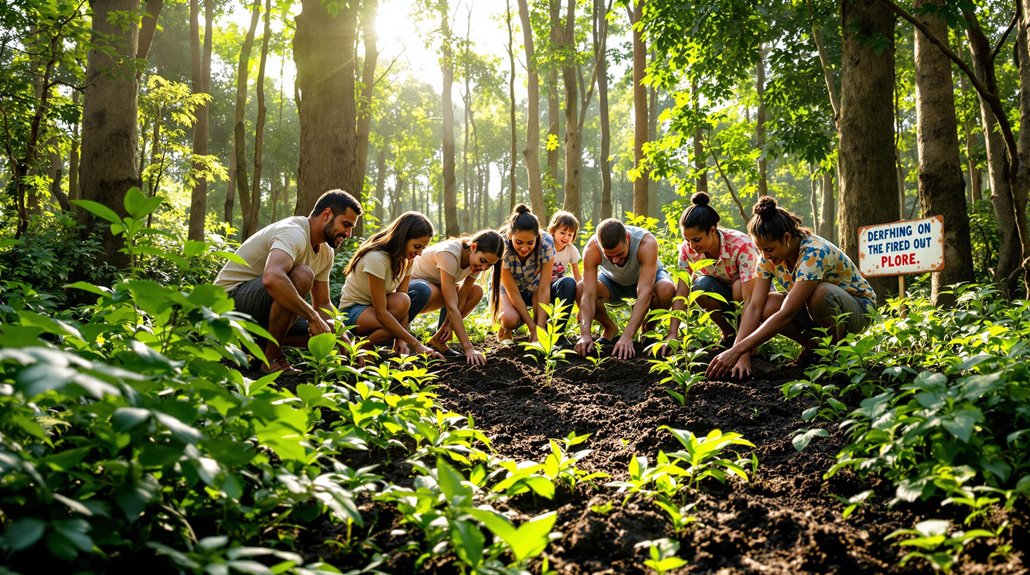
Community involvement plays an essential role in biodiversity conservation, as local residents often possess invaluable knowledge about their ecosystems. Their extensive understanding enhances scientific data and informs culturally significant practices. When communities lead initiatives to protect biodiversity, they address local needs and foster long-term commitment. You'll find that projects gain momentum with community support, as strategies tailored to specific conditions yield higher engagement. Moreover, a sense of ownership among community members encourages sustainability. Building relationships based on trust and respect is vital, as is providing education on conservation's importance. This partnership ensures that conservation strategies are culturally appropriate and resonate with the community's values.
Technological Solutions for Conservation
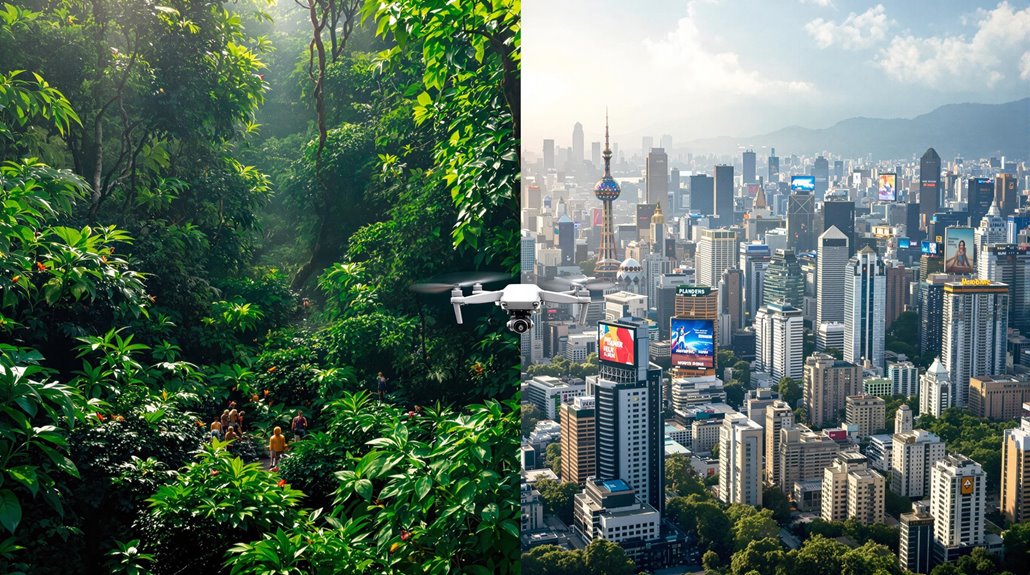
As technology advances, innovative solutions emerge to tackle conservation challenges effectively. You can leverage high-tech mapping tools to track species movements and predict habitats, enhancing global conservation plans. Real-time tracking allows you to monitor wildlife movements, while AI-powered threat detectors alert you to dangers like noise pollution or poaching. The Internet of Things (IoT) enables non-invasive data collection, providing a holistic view of ecosystem health and facilitating prompt interventions. Advanced mapping technologies, including supercomputers and GIS, are revolutionizing how we visualize and analyze biodiversity data, making it easier to identify critical areas for protection. The use of smart technology integration in conservation efforts improves efficiency in monitoring and data collection.
Drones and camera traps gather vital data from remote areas, making anti-poaching efforts more efficient. Finally, eDNA technology offers a non-invasive method to detect species presence, further aiding your conservation strategies. With these tools, you can make a significant impact in preserving biodiversity.
Frequently Asked Questions
How Does Habitat Loss Affect Local Indigenous Communities?
Habitat loss directly impacts local Indigenous communities by disrupting their traditional practices and livelihoods.
You'll find that as forests are cleared for agriculture or urban development, your access to essential resources diminishes, leading to food insecurity.
Cultural heritage sites are destroyed, eroding your knowledge systems and spiritual connections to the land.
In addition, these environmental changes contribute to health struggles and economic challenges, making it harder for your community to thrive.
What Role Do Invasive Species Play in Habitat Loss?
Invasive species play a significant role in habitat loss by outcompeting native organisms for resources, disrupting food webs, and altering ecosystem functions.
When you introduce non-native species, they can prey on or hybridize with native species, leading to declines or extinction.
This disruption not only affects biodiversity but also impacts local communities reliant on these ecosystems.
Can Habitat Restoration Reverse Biodiversity Decline?
Yes, habitat restoration can effectively reverse biodiversity decline. When you restore degraded areas, you're reintroducing native plants and animals, which boosts species diversity.
This process also enhances ecosystem functions, like improving water quality and regulating climate. By reconnecting fragmented habitats, you enable wildlife to thrive and adapt.
Ultimately, your efforts in habitat restoration not only benefit endangered species but also promote a healthier, more resilient environment for all living organisms.
How Does Habitat Loss Impact Global Food Security?
Imagine vibrant fields transformed into barren land, where crops struggle to thrive.
Habitat loss directly impacts global food security, reducing available farmland and driving up food prices. As fewer species flourish, nutritional diversity dwindles, leaving you with limited options.
The cycle continues, leading to food insecurity and waste. By understanding these consequences, you can advocate for sustainable practices, ensuring future generations enjoy a rich, diverse food supply, and a healthy planet.
What Are the Economic Consequences of Habitat Destruction?
Habitat destruction has serious economic consequences. You might see immediate gains like job creation and resource extraction, but these come at a cost.
Long-term, you face the loss of ecosystem services, declining biodiversity, and increased vulnerability to climate change. The tourism sector can suffer, leading to reduced economic activity and lost revenue streams.
Ultimately, the economic impact could be staggering, potentially reducing global GDP by trillions and threatening industries that depend on nature.
Conclusion
To summarize, habitat loss is a staggering threat to biodiversity, with an estimated 1 million species facing extinction. This alarming statistic underscores the urgency for action. By actively participating in conservation efforts and supporting local initiatives, you can help reverse this trend. Remember, every small action counts—whether it's planting native species or reducing waste. Together, we can create a future where nature thrives, ensuring our planet remains vibrant and diverse for generations to come.
